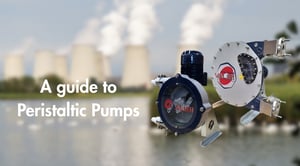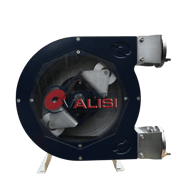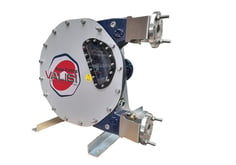
A guide to peristaltic pumps
A guide to Peristaltic Pumps
What are peristaltic pumps?
A peristaltic pump is a type of positive displacement pump which moves fluid through a flexible tube by compressing and releasing it in a rhythmic motion. The pump operates using a set of rollers that rotate around a central hub, squeezing the tube against a continuous flow. Once the rollers release the tube, it returns to its original shape, drawing in more fluid due to the vacuum effect.
This design makes peristaltic pumps ideal for handling abrasive, corrosive or shear sensitive fluids, as the liquid only contacts the inner surface of the tubing, reducing contamination and maintenance. Commonly used in industries such as chemical processing, water treatment, pharmaceuticals, and food production, where precise dosing and sanitary operation are essential.
What are they used for?
Peristaltic pumps work by a rotor continuously squeezing a flexible tube (usually in 3 places) and moving the cavities around the tube from the suction to discharge. This action is called peristalsis. They are very useful as there is only one part (the tube) that is ever in contact with the liquid, peristaltic pumps are manufactured in a number of sizes and can also tolerate an amount of solids, so are very useful in a number of applications from pumping blood in kidney dialysis machines to handling raw sewage.
Can they run dry?
Yes, because they have no internal fluid contact, and the simple mechanism of the rollers compressing and releasing the tubing to push the fluid along means their ability to run dry without damage makes them versatile for various pumping applications.
Whilst peristaltic pumps can run dry, there are a few things to still watch out for!
- Wear to the tubing – running dry for long periods increases friction & heat and this can cause premature wear & cracking of the tube.
- Material Selection – some tubing materials like silicone and Tygon handle dry running better than others.
- Vacuum/pressure limits – running dry may cause higher suction vacuum, which can wear on the tubing if the pumps isn’t designed for it.
So, in answer yes, continuous dry running is possible but not ideal – and will need constant monitoring. Short periods of dry running will be fine.
Are they self-priming?
Self-priming means the pump can remove air and draw liquid into itself without manual filling.
Peristaltic pumps are self-priming, the rolling compression of the tubing creates a strong suction as the rollers move along, pulling fluid in. Typically, they can generate up to 8-9 meters of suction lift, dependant on tubing material, pump size and speed.
What applications can peristaltic pumps be used in?
Many applications are suitable for peristaltic pumps including Laboratory dosing & sampling, chemical metering & transfer, food & beverage production, medical & biopharma processes and wastewater and sludge handling.
At Crest we now stock a range of Valisi peristaltic hose pumps, perfect for high-pressure, low volume transfer tasks. A diverse selection of hoses are available, each offering varying levels of chemical compatibility and mechanical resistance to suit specific application requirements. You can find more out about the two ranges here.








